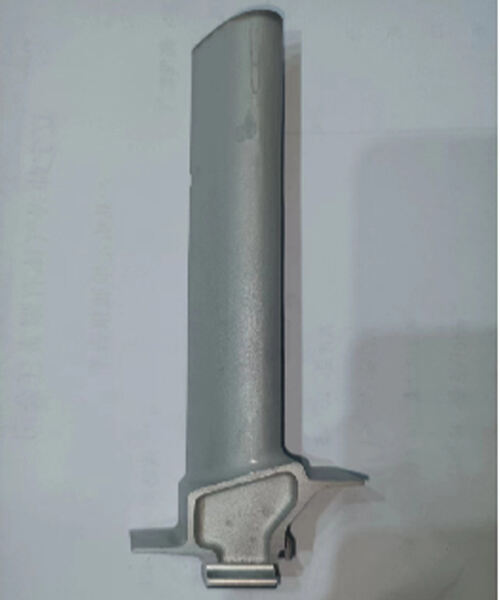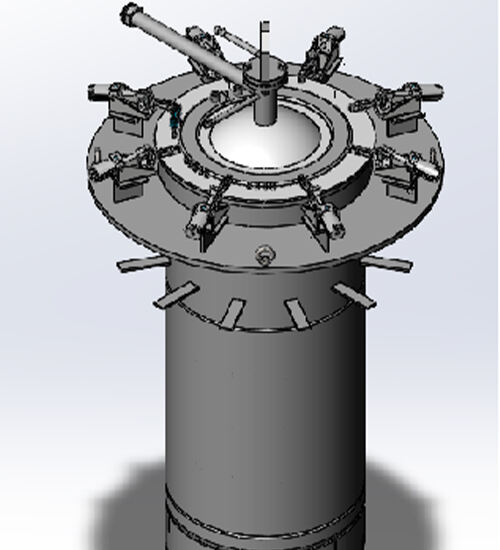Fluoride ion cleaning technology is an efficient surface cleaning method, widely used in precision manufacturing, electronics, aerospace andother fields. This technology uses the chemical properties of fluoride to remove oxides on the blade surface a...

Fluoride ion cleaning technology is an efficient surface cleaning method, widely used in precision manufacturing, electronics, aerospace and
other fields. This technology uses the chemical properties of fluoride to remove oxides on the blade surface and oxides deep in the cracks
through chemical reactions or physical actions, greatly reducing the maintenance cost of aircraft engines, greatly improving maintenance
efficiency, and solving the processing and repair problems of aircraft engine and gas turbine blades.
Crack tip oxide film pulsed fluoride ion ultra-low damage cleaning technology

Before cleaning

After cleaning

After welding
Question
The dense and stable oxide film formed by blades working for a long time in a high-temperature oxidizing and corrosive environment
Before repairing blade cracks, the oxide film needs to be thoroughly cleaned
Welding repair of deep cracks in rotor blades requires the formation of a depleted layer of aluminum and titanium elements
Difficulty
The oxide film at the crack tip is difficult to effectively remove
Ultra-low damage to blade cleaning substrate is difficult to achieve
It is difficult to discharge fluoride from the roots when cleaning cracks
Fluoride ion cleaning used in brazing process
The first experiments
Our factory used GHL-6-2 brazing filler metal to repair the cracks with large gap brazing. After brazing, the excess brazing filler metal and solder resist on the surface of the repaired part were cleaned by manual polishing. From the appearance, the crack surface has been completely covered by the brazing filler metal.
In order to clarify the surface state of the repaired part, a local fluorescent penetration inspection was carried out. The inspection results are shown in the Fluorescence inspection picture of the blade surface repair area. It can be seen that the original cracking parts of cracks A and B and the nearby brazing filler metal coating locations are displayed in dense dot patterns.

The second batch of experiment

Comparison of process 3 before and after cleaning



After cleaning



Before cleaning
Before cleaning: The blade surface may be covered with oxide layers, oil, dust or other contaminants, causing the surface to look dull, mottled or uneven.
Contaminants and oxide layers may shorten the life of the blades and increase the frequency of maintenance and replacement.
After cleaning: The blade surface becomes brighter and more uniform, and the contaminants and oxide layers are removed, making the surface look cleaner and smoother.
Cleaning removes harmful substances, which can extend the service life of the blades and reduce maintenance costs
Large gap brazing repair technology

Crack morphology before brazing repair

Crack morphology before brazing repair

The X-ray photo before brazing repair showed 3 cracks

After brazing repair, the X-ray photo showed no cracks

Metallurgy of the repaired cracks
These photos can clearly show the X-ray flaw detection comparison before and after brazing repair, especially the original crackshave been well repaired. This clear comparison clearly shows the excellent results of the repair process, which not only proves theprofessional level of the technicians, but also shows the world the powerful power of brazing technology in repair projects. Suchresults will undoubtedly bring great impetus to the progress and development of related industries, and are also a perfect testimonyto the hard work of engineers.




Before cleaning, the surface of the blade may be covered with oxide layers, carbon residues and other contaminants,resulting in a rough, dull surface, or even tiny cracks or flaws. However, once cleaned with fluoride ions, theseproblems seem to be swept away, and the blades are brand new! The surface is clean and smooth, with no tracesof residues and oxide layers, the glossiness is significantly improved, and cracks and flaws are effectively repaired,making the blade state glow with new vitality and brilliance. This huge change not only improves the appearancequality of the blade, but more importantly, it also provides a solid guarantee for the performance and life of theblade, ensuring its reliable operation in high temperature and high pressure environments.

| element | wt% | wt%Sigma | At% |
| 0 | 26.85 | 0.79 | 54.58 |
| Cr | 68.76 | 0.81 | 43.00 |
| Co | 4.38 | 0.44 | 2.42 |
| total | 100 | 100 |
Scanning electron microscopy before cleaning

| element | wt% | wt%Sigma | At% |
| 0 | 7.91 | 1.04 | 22.04 |
| Cr | 82.37 | 1.19 | 70.61 |
| Co | 7.46 | 0.62 | 5.64 |
| Ni | 2.25 | 0.55 | 1.71 |
| total | 100 | 100 |
Scanning electron microscopy after cleaning, oxygen content decreased
Advantages of fluoride ion cleaning technology
High-efficiency cleaning ability:
Fluoride ion cleaning technology can quickly and thoroughly remove the oxide layer, carbon residue and other contaminants on the surface ofturbine blades, ensuring the cleanliness and smoothness of the blade surface.
Non-contact cleaning:
Turbine blades are precise and complex parts, and traditional mechanical cleaning methods may cause surface damage or deformation. Fluorideion cleaning technology removes dirt through chemical reactions and physical actions, avoiding this risk and ensuring the geometry andperformance of the blades.
Applicable to high temperature and high pressure environment:
Turbine blades are subjected to extreme high temperature and high pressure conditions in the internal working environment of the engine.Fluoride ion cleaning technology can be carried out under high temperature and high pressure conditions, with good cleaning effect, whichmeets the special working environment requirements of turbine blades.
Reduce surface fatigue and oxidation:
The surface of the cleaned turbine blades is smooth, which not only reduces aerodynamic resistance and improves engine efficiency, but alsoreduces surface oxidation and fatigue cracks, and extends the service life of the blades.
Environmental protection and energy saving:
Compared with traditional chemical cleaning methods, fluoride ion cleaning technology does not require the use of a large amount of organicsolvents, has low waste liquid treatment costs, and meets environmental protection requirements. In addition, the surface of the cleaned turbineblades is smoother, which reduces aerodynamic resistance and helps improve the fuel efficiency of the engine.
Process controllability:
Fluoride ion cleaning technology has good process controllability, and the operating parameters can be precisely controlled to ensure theconsistency and repeatability of the cleaning effect.
Improve maintenance efficiency:
The surface of the cleaned turbine blade is easier to inspect and maintain, which improves the efficiency and safety of maintenance operations.

The second generation FIC fluoride ion cleaning equipment

The third generation FIC fluoride ion cleaning equipment

FIC equipment heating furnace

FIC equipment reactor

FIC equipment tooling

FIC equipment main frame
Our professional sales team are waiting for your consultation.